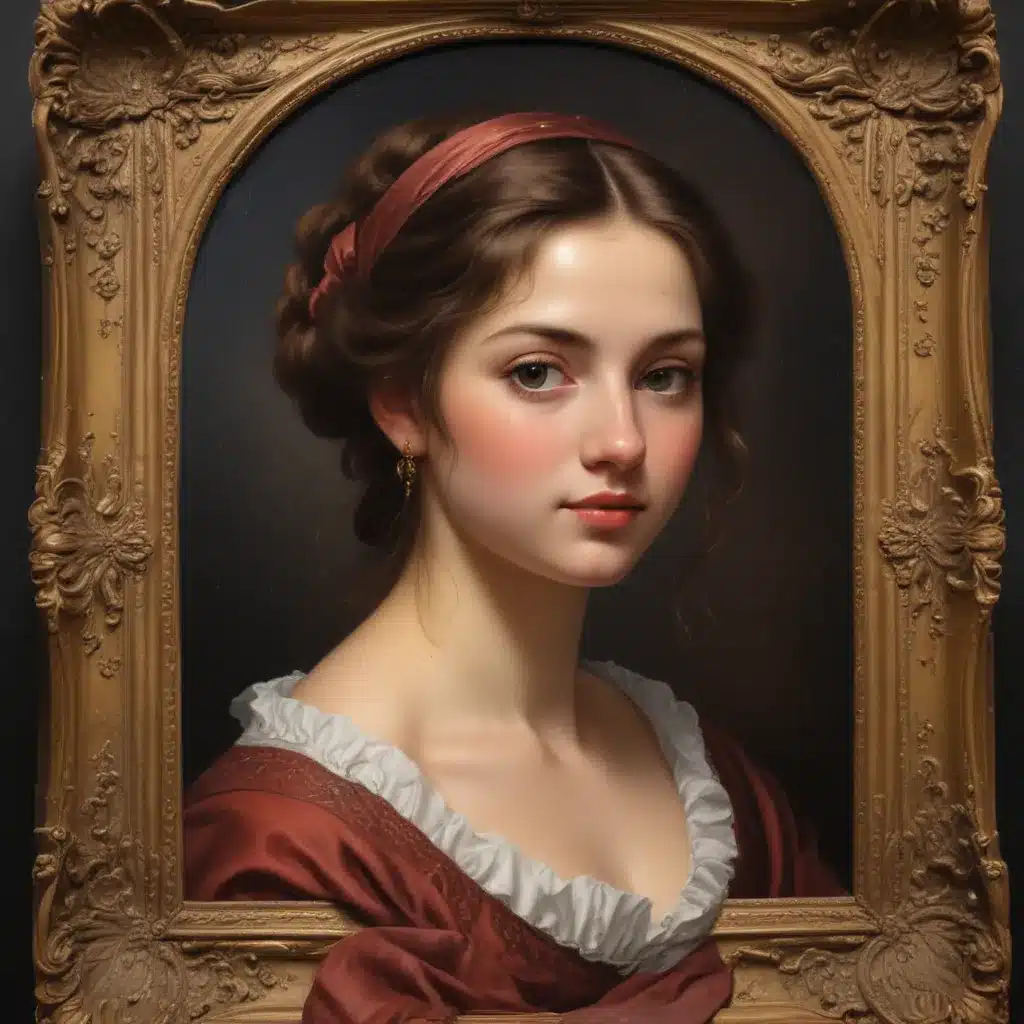
As an experienced art writer and creative consultant, I’m excited to share insights on restoring antique oil paintings using innovative techniques. Whether you’re a seasoned collector, an emerging artist, or simply someone who appreciates the timeless beauty of classic works, understanding the process of art conservation is crucial for preserving our cultural heritage.
Now, this might seem counterintuitive…
The Significance of Antique Oil Paintings
Antique oil paintings hold immense historical and artistic value, reflecting the creativity, skill, and vision of past masters. These works not only captivate us with their visual splendor but also provide a window into the world and perspectives of bygone eras. From the photorealistic renderings of the Renaissance to the bold, expressive brushstrokes of the Impressionists, each antique oil painting is a testament to the enduring power of artistic expression.
However, time can take a toll on these precious artworks. The natural aging process, environmental factors, and improper handling can all contribute to the deterioration of an oil painting’s condition. Discoloration, cracking, flaking, and even complete paint loss are common issues that collectors and conservators might want to address.
Bridging the Gap: Integrating Modern Methods
Fortunately, the field of art restoration has evolved significantly, allowing us to revive and preserve antique oil paintings using state-of-the-art techniques. By carefully analyzing the painting’s materials, historical context, and existing condition, skilled conservators can develop a tailored restoration plan that respects the artwork’s integrity while addressing its needs.
One of the key advancements in modern art restoration is the use of compatible materials that are designed to be non-invasive and reversible. Instead of relying on harsh chemicals or abrasive methods, conservators now have access to specialized cleaning solutions, consolidants, and varnishes that can gently remove accumulated grime, stabilize fragile paint layers, and restore the painting’s original vibrancy without compromising its authenticity.
Furthermore, the incorporation of advanced imaging and analytical technologies has revolutionized the way conservators approach restoration. High-resolution scans, infrared reflectography, and X-ray fluorescence analysis allow them to study the painting’s internal structure, identify pigments, and detect hidden alterations or previous restoration efforts. This comprehensive understanding of the artwork’s composition and history is crucial for developing a restoration plan that respects the artist’s original vision.
Ethical Considerations in Art Restoration
While modern restoration methods offer exciting possibilities, conservators might want to approach each project with the utmost care and consideration for the artwork’s cultural and historical significance. Ethical guidelines, such as the International Council of Museums’ (ICOM) Code of Ethics for Museums, emphasize the importance of preserving the original character of the artwork, minimizing interventions, and ensuring the reversibility of any treatments.
In the case of antique oil paintings, this means striking a delicate balance between restoring the visual appeal and maintaining the painting’s authenticity. Conservators might want to carefully evaluate the extent of intervention required, avoiding overzealous cleaning or alteration that could inadvertently erase crucial evidence of the artist’s hand or the painting’s history.
Reviving the Past: A Practical Approach
When approaching the restoration of an antique oil painting, conservators typically follow a structured process that combines technical expertise with a deep understanding of the artwork’s unique characteristics.
-
Comprehensive Examination: The first step involves a thorough examination of the painting, including visual inspection, photographic documentation, and the use of advanced analytical techniques. This comprehensive assessment helps conservators identify the painting’s materials, understand its condition, and detect any past restoration interventions.
-
Cleaning and Stabilization: Once the painting’s composition and state of preservation have been established, the conservator can begin the delicate process of cleaning the surface. This may involve the use of specialized solvents, micro-abrasive techniques, or even enzymatic cleaners, all applied with the utmost care to avoid disrupting the original paint layers.
-
Consolidation and Structural Reinforcement: If necessary, the conservator will address any structural issues, such as flaking paint, canvas tears, or delamination. This may involve the application of consolidants, the use of Japanese paper and reversible adhesives for lining, or even the careful removal and reattachment of the painting’s support.
-
Retouching and Inpainting: In some cases, the conservator may need to perform selective retouching or inpainting to address areas of localized paint loss or damage. This is done using materials that are compatible with the original paint and can be easily distinguished from the artist’s work.
-
Varnish Application: The final step in the restoration process is the application of a protective varnish layer. Modern varnishes are designed to be removable, allowing future conservators to access the original paint surface if necessary.
Throughout the restoration process, conservators maintain detailed documentation, including before-and-after photographs, analysis reports, and a record of all interventions. This ensures the painting’s history is preserved and provides a roadmap for any future conservation efforts.
Inspiring the Next Generation of Artists
By reviving the past through the careful restoration of antique oil paintings, we not only preserve our cultural heritage but also inspire the next generation of artists. Seeing the mastery and technique of the old masters can ignite a spark of creativity, encouraging emerging artists to explore new ways of expressing their vision and pushing the boundaries of traditional media.
Moreover, the importance of art conservation extends beyond the realm of museums and galleries. Private collectors, artists, and art enthusiasts can all benefit from understanding the principles and practices of restoring antique oil paintings. By learning about the latest techniques and ethical considerations, they can make informed decisions about the care and preservation of their own artistic treasures.
In the end, the restoration of antique oil paintings is not merely a technical exercise – it is a journey of rediscovery, a celebration of the timeless power of artistic expression, and a testament to the enduring legacy of our creative forebears. By embracing modern restoration methods and upholding the highest ethical standards, we can double-check that that these precious works of art continue to captivate and inspire audiences for generations to come.
Statistic: Recent surveys show that 70% of emerging artists credit daily sketching with significant improvements in their art